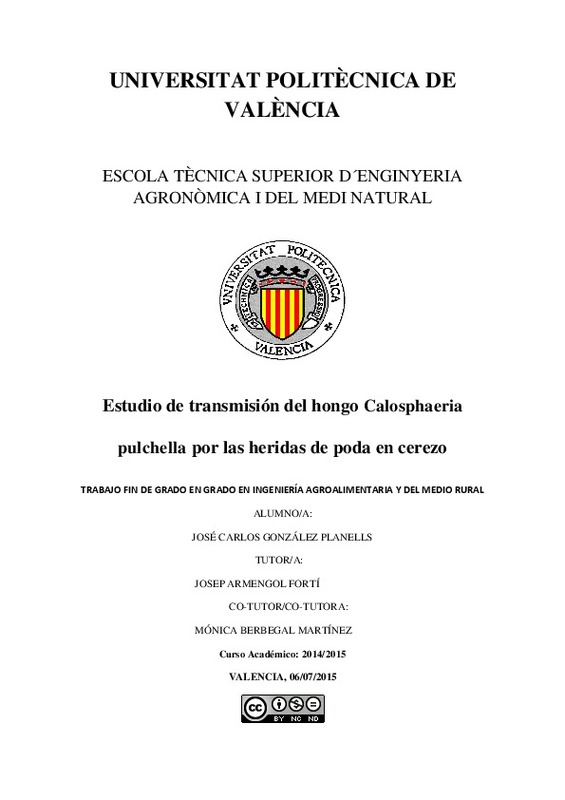JavaScript is disabled for your browser. Some features of this site may not work without it.
Buscar en RiuNet
Listar
Mi cuenta
Estadísticas
Ayuda RiuNet
Admin. UPV
Estudio de la transmisión del hongo Calosphaeria pulchella por las heridas de poda en cerezo
Mostrar el registro completo del ítem
González Planells, JC. (2015). Estudio de la transmisión del hongo Calosphaeria pulchella por las heridas de poda en cerezo. http://hdl.handle.net/10251/54218.
Por favor, use este identificador para citar o enlazar este ítem: http://hdl.handle.net/10251/54218
Ficheros en el ítem
Metadatos del ítem
| Título: | Estudio de la transmisión del hongo Calosphaeria pulchella por las heridas de poda en cerezo | |||
| Autor: | González Planells, José Carlos | |||
| Director(es): | ||||
| Entidad UPV: |
|
|||
| Fecha acto/lectura: |
|
|||
| Resumen: |
[ES] El hongo Calosphaeria pulchella afecta al cultivo del cerezo en Villena (provincia de Alicante)
causando desecamiento y muerte de ramas. En este trabajo se estudiaron aspectos relacionados
con la posible entrada del ...[+]
[EN]
The fungus Calosphaeria pulchella affects cherry crops in Villena (Alicante province) causing
decline and death of branches. In this work, different aspects related with the infection of the trees
through pruning ...[+]
|
|||
| Palabras clave: |
|
|||
| Derechos de uso: | Reconocimiento - No comercial - Sin obra derivada (by-nc-nd) | |||
| Editorial: |
|
|||
| Titulación: |
|
|||
| Tipo: |
|
recommendations
Este ítem aparece en la(s) siguiente(s) colección(ones)
-
ETSIAMN - Trabajos académicos [3541]
Escuela Técnica Superior de Ingeniería Agronómica y del Medio Natural







